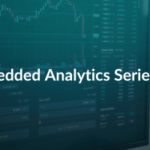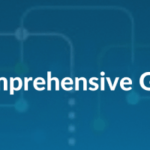The problem of being over stocked or out-of-stock is not new in retail business. Retailers of all sizes find inventory optimization to be their most complex supply chain problem. Both being over-stocked and being out-of-stock has costs associated with it. For example, if your store is out-of-stock for a product, your customers are likely to fulfil their purchase from a competitor. On the other hand having excess stock has inventory costs that will bring down your bottom line.
With the increasing adoption of business intelligence and analytics solutions, some of the leading retailers are making use of predictive analytics in order to improve their sales forecast and accordingly optimize inventory at the store and product level. Below are some of techniques that retailers can use to optimize inventory.
- 1. With the right demand forecast at a store and product level, a multi-store retailer can identify how much stock each store has for various products vis-à-vis the expected sales for those products. This way they can identify which store are over-stocked and which ones are under-stocked and then create a schedule to transfer stock between these stores. Since the retailer is forecasting the demand, this is a proactive action that will help them optimize inventory among stores. This could be a complex solution considering various factors such as different products with different SKUs, distance between stores, pricing, cost of transfer, etc.
- 2. Analytics can also be used for creating optimal inventory replenishment plans by the distribution centre, retail store, or the distributor. A replenishment plan will resolve two important problems: when to reorder and how much to reorder. Replenishment plans can be optimized for transport cost, vendor lead time and other constraints such as material handling and storage capacity.
- 3. Analytics can also help retailers in SKU rationalization. Studies show that upto 35-40% of inventory in retail businesses is stuck in slow-moving or non-selling SKUs. Based on various factors such as sales, margin, and the shelf space available to them, retailers can optimize their assortments and phase-off their slow-moving and dead inventory.
- 4. Predictive analytics can also help retailers in understanding the seasonality of product sales and help them optimize their stock and shelf-space utilization based on seasons. For example, one can identify products that are stocked all-year but sell only in a particular season.
- 5. An analysis of promotions and offers made by the retailer in the past can give insights into the demand in the upcoming offers periods and help the store managers be more prepared and reduce instances of products being out of stock.
To learn about how inventory optimization can benefit your business, get in touch with us to conduct a free assessment of your own data.















